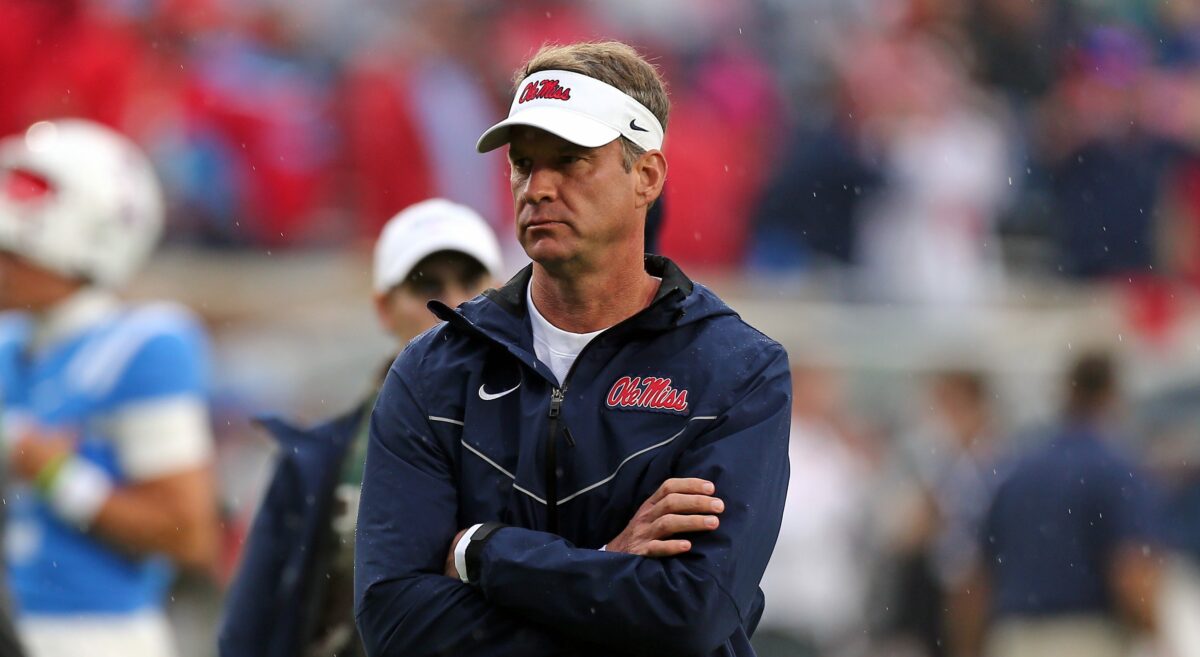Pointing to the result of the Notre Dame-Indiana game as evidence the Hoosiers shouldn’t have been in the CFP is a weak argument at best.
You could see the potential for ridiculous arguments coming before kickoff in South Bend on Friday night. You could see it really brewing when Notre Dame went up 14-0 over Indiana in the College Football Playoff first round, and it was out in full force when the Fighting Irish took a 27-3 lead in the fourth quarter.
The arguments that Indiana didn’t deserve its No. 10 seed playoff spot were abundant after the Hoosiers’ 27-17 first-round loss, subtly from folks like Lane Kiffin and more bluntly from Kirk Herbstreit on College GameDay on Saturday. They’re all preposterous.
Indiana absolutely deserved its College Football Playoff berth, and pointing to the result of the game as evidence to the opposition is a weak argument at best because what happens in the playoff isn’t necessarily an indictment on which teams earned their way in.
If you’re really anti-Hoosiers in this year’s playoff, you could yell about how they hadn’t played anybody. You could argue their strength of schedule wasn’t particularly impressive with wins over Nebraska, Maryland and Washington. You could point to their only regular-season loss being an embarrassing one to Ohio State or how Indiana wasn’t in Big Ten title contention late in the season.
But claiming the Hoosiers didn’t deserve to be there because you didn’t like the result of the Notre Dame game is a hindsight logical fallacy. Stop acting like there have never been blowouts or ugly playoff games and pretending it would be different with more SEC teams in the field.
Indiana played the schedule it had. It was dominant through the vast majority of it and put up style points where it could. It clearly caught the attention of the College Football Playoff committee, which placed the Hoosiers at No. 8 in the debut rankings when they were 9-0. Even after a 23-point loss to the Buckeyes, the committee dropped Indiana just five spots to No. 10.
As the season approached Selection Sunday, 11-1 Indiana wasn’t playing for a conference championship, but the Hoosiers’ playoff resume wasn’t even a debate. Their resume wasn’t being evaluated with the other teams’ in contention for an at-large bid. It was all about SMU and Alabama and South Carolina.
Indiana was a given in the 12-team field, like most, if not all, 11-win Power Four teams would be in the same situation.
Now, whatever version of Curt Cignetti and the Hoosiers that showed up in South Bend on Friday is a different story. This was not the same aggressive team we saw all season and instead looked like a team playing not to lose, which is the perfect recipe for losing, with or without a couple garbage-time touchdowns that make the score inaccurately reflect the game.
Let’s not forget: There’s almost always a blowout or ugly CFP game, whether we’re talking four or 12 teams, and the results don’t invalidate what a team did to get there.
Here’s what I noted three years ago while similarly defending Cincinnati, despite its 21-point loss to Alabama:
At least they scored points on Alabama, unlike Michigan State against the Crimson Tide in the 2015-16 playoff or Ohio State against Clemson in the 2016-17 season. At least they didn’t lose by 35 or more points, like Oklahoma did to LSU (63-28) in the 2019-20 semifinal, or like Florida State did against Oregon (59-20) in the inaugural 2014-15 playoff.
Indiana’s magical season is over, and it ended in particularly disappointing fashion. But you can’t present a revisionist version of history and playoff resumes to argue it was a mistake to include the Hoosiers. They earned their spot, and their game was ugly, just like many playoff-deserving teams before them.
[lawrence-auto-related count=3 tag=421393249]








